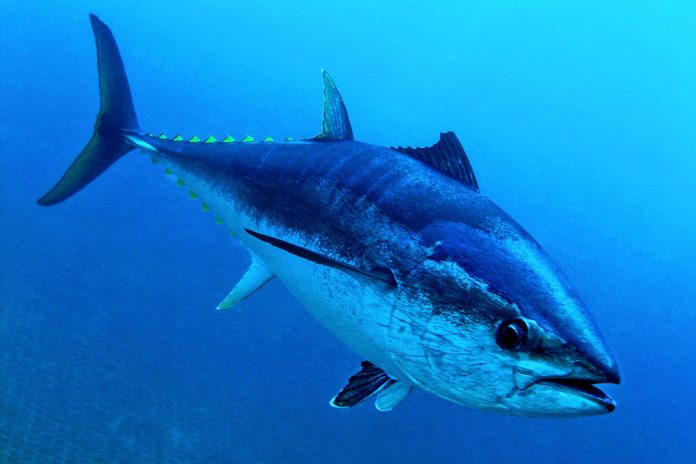Before scientists became aware of the toxic effects of mercury, this heavy metal was used widely in medicine, cosmetics, and industries like hatmaking. As a byproduct of coal burning, the high demands of fossil fuel production have resulted in widespread environmental impact. It is no longer a question of are we exposed, it is a matter of how much and at what effect. Eating contaminated fish is the number one cause of mercury exposure in America. Mercury is spewed into the air from coal-burning power plants and factories. That pollution can travel halfway around the world and then settle into lakes, rivers, and oceans, where it is absorbed or ingested by small organisms. Bioaccumulation then occurs where the mercury works its way up the food chain, its concentration rising with each step. Big predatory fish that are commonly consumed by many such as swordfish and tuna can have especially high concentrations in their bodies.
Toxic Effects of Mercury
Even small amounts of mercury can interfere with brain development, making exposure particularly risky for children and women in their childbearing years. The presence of this metal is considered toxic at any level. High concentrations of mercury can result in damage to vital organs including the brain, heart, liver and kidneys.
In addition, the neurological system is highly susceptible to damage from chronic mercury exposure. Initial symptoms may include depression, fatigue, headache, dizziness, infertility, immune dysfunction and cognitive decline. The level of toxicity that will result in adverse effects varies among individuals and may be dependent on several factors including genetics.
Of all age groups affected by mercury toxicity, children are at greatest risk due to high growth rates and low body mass. Pregnant women have been advised for years to avoid tuna due to the mercury content and potential effects on the fetus.
Sources of Mercury
Mercury is one of the most pervasive pollutants in our aquatic ecosystem, and its presence is steadily rising in most regions throughout North America, primarily due to coal burning power plants and mining activities. Humans are exposed to mercury through consumption of fish (methyl-mercury), occupation (ionic mercury and mercury vapor), vaccinations (ethyl-mercu-ry), dental amalgams (mercury vapor) and foods and drinks rich in high fructose corn syrup. Fish with the highest levels of con-tamination include tuna, swordfish, marlin, mackerel and shark.
Diagnosis of Heavy Metal Toxicity
A physician properly trained in environ-mental medicine such as a naturopathic doctor can accurately screen patients for the presence of heavy metals through hair, urine, or blood testing. Hair testing may be a valuable tool for evaluating methyl-mercury exposure but may not show the burden of elemental mercury in the body. Blood tests for heavy metals have been de-veloped but are only looking for acute ex-posure which is often of limited value when we are trying to assess total body burden. Urine testing requires the use of a provoking agent such as pharmaceutical chelators which mobilize stored heavy metals prior to measurement.
Mercury Exposure in Hawaii
A recent study published by the University of Michigan provides support that mercury concentrations in the North Pacific Ocean are increasing as a result of human activity which is accumulating in yellowfin tuna. Researchers have found that the concentration of mercury in yellowfin tuna caught near Hawaii is increasing at a rate of at least 3.8% each year. This rate of increase is consistent with human production of mercury and suggests that mercury concentrations in fish are keeping pace with current load-ing increases to the ocean. “researchers have found that the concentration of mercury in yellowfin tuna is increasing at a rate of at least 3.8% per year” Weighing the Risks and Benefits of Seafood Consumption
For those who consume seafood, dietary guidelines recommend fish intake to be 8 to 12 ounces per week. Both mercury levels and amounts of beneficial omega-3 fatty acids vary widely from one seafood variety to the next. There are several other sources of seafood besides salmon that are low in mercury and high in healthy omega-3’s including anchovies, herring, mussels, sardines and trout. Research suggests that women who eat more fish have smarter babies, but only if they also keep their mercury intake low. Babies whose mothers were in the top 10 percent of mercury intake showed adverse effects in their cognitive development.
General Rules of Thumb
- Ease up on tuna. Tuna is the most common source of mercury exposure in the country. If you or your kids regularly consuming canned tuna, poke, sashimi or yellowfin sushi, consider limiting consumption to less than one serving a week.
- Make safer sushi choices. Popular sushi fish are often predators of the food chain which make them high in mercury. Fish and shellfish like eel, salmon, crab, and clam are lower in mercury.
- When in doubt, smaller is better. Life is short and ahi tastes great. Once thing that can help minimize exposure is often to smaller tuna known as “shibi” which weigh under 50 pounds.
- Measure your levels. If you are a regular ahi consumer like many of us living in Hawaii, consider having your mercury levels properly measured by a trained physician.









